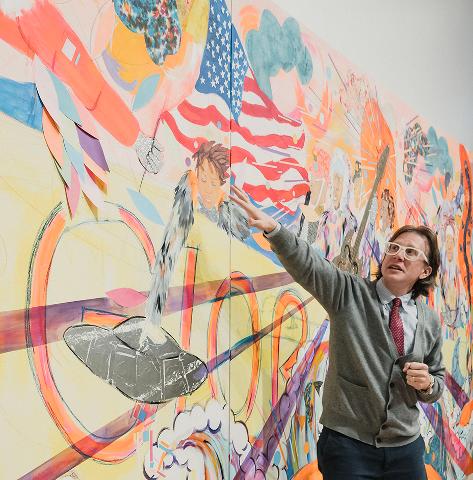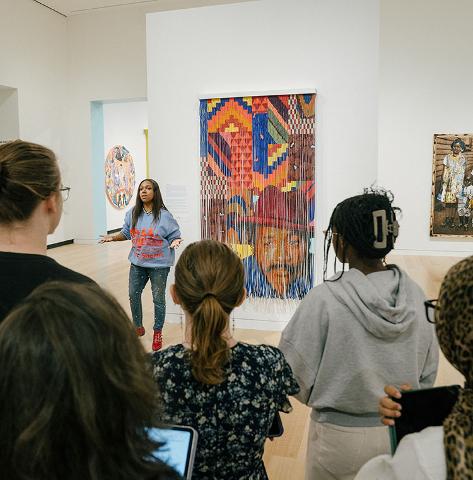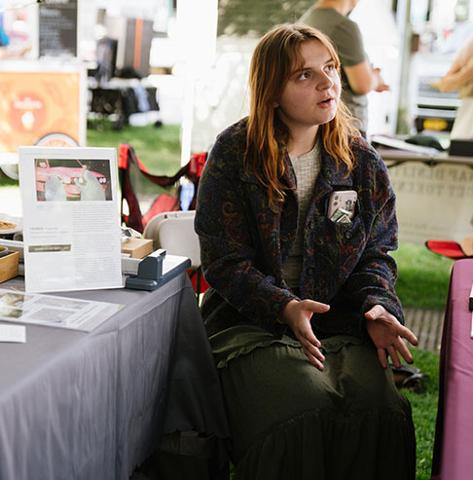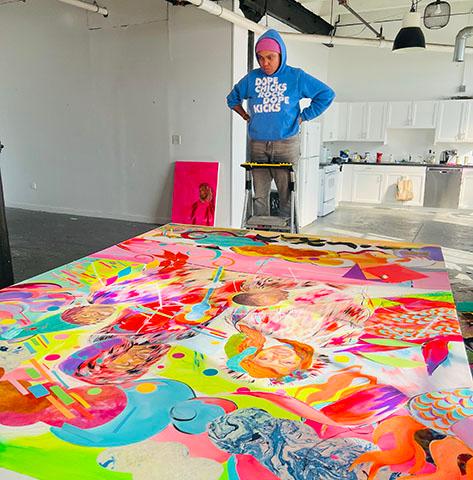John Bentham
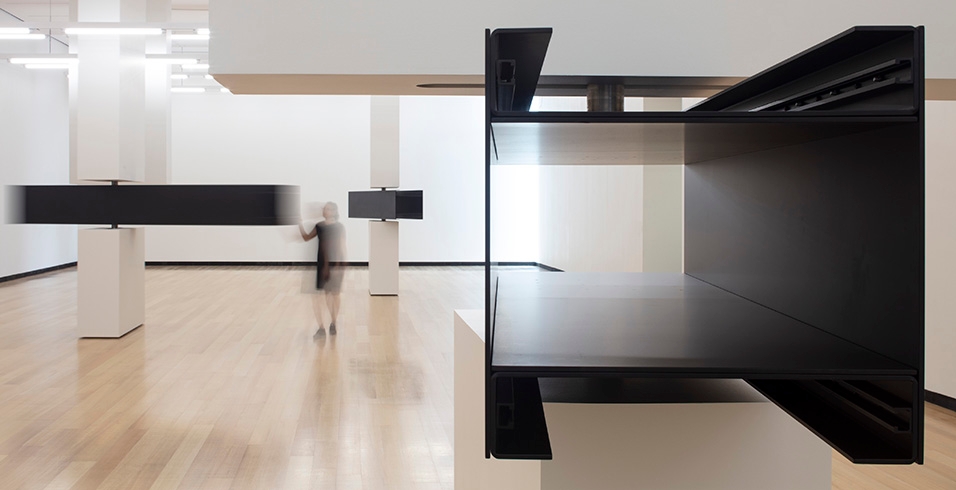
Sometime around the middle of May of this past year, the images and videos began flooding in: people hurling themselves into each other’s arms, accompanied by an appropriate mixture of laughter, tears, and even disbelief. Our country seemed to be turning a corner in the fight against COVID-19. The world was opening up. And after more than a year of separation, many friends, family, and loved ones were finally reuniting with each other in person. These captured moments featured a mix of different types of people and situations, yet they were all united by the importance of interaction, of the physical touch. After only seeing each other for a year–probably through a digital screen–humans were so excited to feel the embrace of those they cherished most.
It is in this current social climate, in which we are perhaps more aware of our tactile world than ever, that I find myself incredibly thankful to be able to engage with Sarah Oppenheimer’s work at the Wellin. Oppenheimer has spoken about the concept of touch as a key to unlocking the whole world. At first, this may sound almost oversimplified, but after our collective experience of 2020 Oppenheimer’s words almost verge on understatement. The artist’s exhibition at the museum will invite viewers to touch works of art with no instructions or prescribed action. The works, taken together, will draw your attention to the space and people around you while emphasizing your own agency as a visitor to a museum. This is achieved in part by the artist’s decision to conceal most of the inner workings of her sculptures, or machines. If you could view the mechanics of these machines, you would rightly marvel at the fascinating mind of this artist. I can attest to their complexity and the incredible amount of time and labor required by the installation team to assemble them. But Oppenheimer’s work is ultimately not about the artist but rather about the visitor. In fact, as many distractions as possible have been removed from the gallery space (wall colors, labels, furniture, etc.) to allow visitors to focus on the experience of the space and ultimately their own agency within it. The artist is far more concerned with creating a space for experience rather than instructing visitors about the correct interpretation of her art.
Departments on the Hamilton College campus are taking this notion and running with it. At the beginning of the semester, the dance department will choreograph and debut a new piece in which dancers use the machines as dance partners. And later this semester, students in the music department will compose new soundscapes for visitors to listen to while in the exhibition. As the semester gets underway and the exhibition opening nears, I am excited by the potential for unique collaborations between the campus community and this exhibition.
Sarah Oppenheimer: Sensitive Machine is, at its core, an experiential exhibition, which makes it a challenge to document through images or describe through words. Nevertheless, it promises to produce experiences that are unforgettable for visitors.




